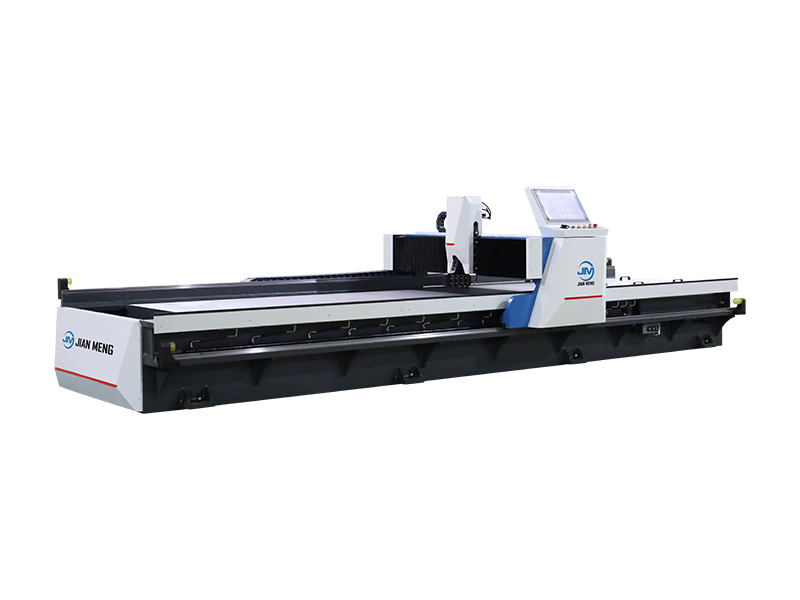In precision metal manufacturing—where components like automotive hydraulic阀芯 (spools), aerospace titanium alloy tubes, and medical stainless steel instruments demand strict surface integrity, dimensional accuracy, and aesthetic consistency—integrated
deburring wire drawing and polishing machines have emerged as a transformative solution. Unlike standalone equipment that requires manual material transfer between deburring, wire drawing, and polishing stations, these integrated systems deliver a single-pass, closed-loop finishing process that eliminates bottlenecks, reduces human error, and ensures process traceability. This technical overview explores the machine’s core process integration, technical specifications, material compatibility, industrial applications, and competitive advantages, with a focus on quantifiable performance metrics and alignment with global manufacturing standards (e.g., ISO 8785, ASTM B912, ISO 4287).
1. Technical Definition & Core Process Integration
An integrated deburring wire drawing and polishing machine is a modular, automated system designed to sequentially execute three critical metal finishing operations in a contiguous workflow:
1. Deburring: Removal of machining-induced burrs (rollover, split, or heat-affected zone (HAZ) burrs) from component surfaces/edges.
2. Wire Drawing: Controlled reduction of metal wire/rod diameter (or refinement of surface texture for non-wire components) via die-based extrusion.
3. Polishing: Abrasive refinement of surfaces to achieve target roughness (Ra) and luster.
The machine’s integration is enabled by three technical pillars:
- Modular Tooling Carriers: Servo-driven conveyors or robotic arms (with ±0.01 mm positioning accuracy) that transfer workpieces between process modules without manual intervention.
- Closed-Loop Process Control: A central PLC (e.g., Siemens S7-1500) or industrial PC (IPC) that synchronizes parameters across modules (e.g., adjusting wire drawing speed to match deburring force, or tuning polishing abrasive grit based on post-drawing surface condition).
- In-Line Quality Sensing: Sensors (laser profilometers for burr detection, contact stylus profilometers for Ra measurement) that feed real-time data to the control system, enabling dynamic parameter adjustments (e.g., increasing polishing pressure if Ra exceeds 0.2 μm).
2. Deep Dive into Integrated Processes (Technical Specifications)
Each integrated process is engineered with material-specific constraints and precision requirements. Below is a detailed breakdown of technical parameters for key operations:
2.1 Deburring Module
Tailored to remove burrs while preserving component geometry (critical for parts with tight tolerances, e.g., ±0.05 mm):
- Deburring Methods:
- Mechanical Abrasive: Rotating nylon brushes (grit 120–320) or ceramic media jets (pressure 0.3–0.8 MPa) for ferrous metals (stainless steel 304/316).
- Electrochemical (ECD): For precision parts (e.g., medical needles) with internal burrs (0.005–0.05 mm); uses non-corrosive electrolytes (sodium nitrate solution, pH 6–8) to avoid material pitting.
- Key Metrics:
- Burr Removal Efficiency: >99% for burrs up to 0.5 mm height.
- Edge Radius Control: ±0.02 mm (per ISO 8785 for safety-critical components).
Optimized for diameter reduction (0.1–20 mm initial diameter) and surface texture refinement:
- Die System: Tungsten carbide dies (hardness HRA 90–92) with polished internal channels (Ra < 0.05 μm) to minimize friction; die sequence (3–8 dies) tailored to material ductility (e.g., 5 dies for aluminum 6061, 8 dies for high-strength steel).
- Process Parameters:
- Drawing Speed: 5–50 m/min (adjustable via VFD; slower speeds (5–15 m/min) for brittle materials like titanium).
- Drawing Force: 1–50 kN (monitored via load cells to prevent die damage or wire breakage).
- Lubrication: Water-soluble lubricants (for ferrous metals) or mineral oil (for aluminum) to reduce die wear and cool the workpiece (temperature <120°C to avoid material softening).
2.3 Polishing Module
Designed to achieve consistent surface finish and luster, with flexibility for matte, satin, or mirror finishes:
- Abrasive Systems:
- Dry Polishing: Aluminum oxide (Al₂O₃) or silicon carbide (SiC) belts (grit 240–1200) for initial refinement; diamond-polishing pads (grit 3000–8000) for mirror finishes (Ra < 0.02 μm).
- Wet Polishing: Slurries (alumina + deionized water) for precision parts (e.g., optical components) to avoid abrasive particle embedding.
- Control Metrics:
- Surface Roughness (Ra): 0.02–1.6 μm (adjustable per application; e.g., Ra 0.05 μm for medical implants, Ra 1.2 μm for automotive structural parts).
- Polishing Pressure: 5–30 N (regulated via pneumatic cylinders to prevent surface deformation of thin-walled parts).
3. Key Technical Advantages Over Standalone Equipment
Integrated machines address critical pain points of traditional multi-station finishing, with measurable improvements in efficiency, quality, and cost:
3.1 Process Efficiency & Lead Time Reduction
- Single-Pass Workflow: Eliminates material transfer time (typically 15–30 minutes per batch between standalone machines) and reduces total process lead time by 30–50%.
- 24/7 Unattended Operation: Automated loading/unloading (via robotic arms or coil feeders) and in-line quality checks enable continuous production, increasing throughput by 40–60% (e.g., 5,000 vs. 3,000 parts/day for stainless steel fasteners).
3.2 Quality Consistency & Traceability
- Parameter Synchronization: The central control system ensures process parameters (e.g., deburring brush speed, drawing force, polishing grit) are identical for every workpiece, reducing part-to-part variation to <2% (vs. 5–10% for standalone machines).
- Data Logging: Complies with FDA 21 CFR Part 11 and ISO 9001 by recording process data (timestamp, parameters, sensor readings) for each part, enabling full traceability for regulated industries (medical, aerospace).
3.3 Cost Optimization (Total Cost of Ownership, TCO)
- Capital Cost Savings: Combining three functions into one unit reduces equipment investment by 25–40% (vs. purchasing separate deburring, wire drawing, and polishing machines).
- Operational Cost Reduction:
- Labor: 1 operator vs. 3–4 for standalone stations (saves $50k–$100k/year in labor costs).
- Maintenance: Shared utilities (power, water) and reduced tooling inventory (modular dies/abrasives) cut maintenance costs by 15–25%.
- Material Waste: In-line quality checks reduce scrap rates from 8–12% (standalone) to 2–3%.
3.4 Material Versatility & Process Flexibility
- Compatible Materials: Handles ferrous metals (stainless steel 304/316, carbon steel 1018), non-ferrous metals (aluminum 6061, copper C11000), and high-performance alloys (titanium Ti-6Al-4V, Inconel 718).
- Quick Changeover: Modular tooling (dies, brushes, abrasives) enables switch between part types in 15–30 minutes (vs. 1–2 hours for standalone machines), supporting high-mix, low-volume (HMLV) production.
4. Industrial Applications & Case Studies
Integrated machines are deployed across industries requiring precision finishing, with specific use cases tailored to component requirements:
4.1 Automotive Industry
- Application: Finishing hydraulic valve spools (stainless steel 440C) and drive shaft components (alloy steel 4140).
- Requirements: Deburr internal oil holes (0.5 mm diameter), reduce shaft diameter from 10 mm to 8 mm (wire drawing), and achieve Ra 0.1 μm (polishing) for leak prevention.
- Result: 40% faster production, 99.8% part compliance with ISO 13849 (functional safety).
4.2 Medical Device Manufacturing
- Application: Finishing 316L stainless steel surgical forceps and titanium bone screws.
- Requirements: ECD deburring of 0.01 mm burrs on forcep jaws, wire drawing of screw shanks (diameter 2 mm → 1.8 mm), and mirror polishing (Ra < 0.05 μm) to prevent bacterial adhesion.
- Result: Meets FDA 21 CFR Part 177 (biocompatibility) and reduces validation time by 30%.
4.3 Aerospace Industry
- Application: Finishing Ti-6Al-4V fuel lines and 2024-T3 aluminum aircraft brackets.
- Requirements: Low-heat wire drawing (temperature <100°C) to preserve alloy strength, deburr weld HAZs (0.2 mm height), and polish to Ra 0.08 μm (aerodynamic smoothness).
- Result: Complies with AS9100 (aerospace quality) and reduces weight variation of fuel lines to <1%.
5. Sustainable Manufacturing Advantages
Aligned with global sustainability goals (e.g., UN SDG 9: Industry, Innovation, and Infrastructure), integrated machines offer environmental benefits:
- Energy Efficiency: Shared power systems and optimized process sequencing reduce energy consumption by 20–30% (vs. standalone machines; e.g., 15 kW vs. 22 kW total power).
- Waste Reduction: Reusable abrasives (ceramic media) and closed-loop lubricant recycling (90% lubricant recovery) minimize industrial waste.
- Carbon Footprint: Reduced material scrap and energy use lower carbon emissions by 15–25% per part, supporting ISO 14001 certification.
6. Future Trends & Technological Evolution
Integrated machines are evolving to meet the demands of next-generation manufacturing:
- Industry 4.0 Integration: IoT-enabled sensors (vibration, temperature, abrasive wear) and AI-driven predictive maintenance (MTBF prediction >95% accuracy) reduce unplanned downtime.
- Additive Manufacturing (AM) Compatibility: New modules for deburring/polishing AM parts (e.g., SLM 316L components) to remove support structures and refine layer lines.
- Nanoscale Polishing: Integration of plasma polishing or chemical mechanical planarization (CMP) for ultra-precision components (Ra < 0.005 μm) in semiconductors and optics.


 English
English  中文
中文  Arabic
Arabic  Russian
Russian  Spanish
Spanish  Portuguese
Portuguese  French
French  German
German  Hindi
Hindi  Thai
Thai  Vietnamese
Vietnamese  Khmer
Khmer  Italian
Italian  Turkish
Turkish  Korean
Korean  Belarusian
Belarusian 





